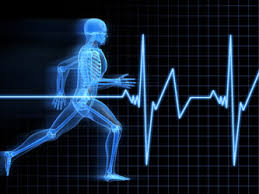Written by Dana on May 25, 2016 |
 The term “sports medicine” often conjures up ideas of a professional athlete receiving therapy in order to play in the big game. Sports medicine can also include athletes at the college, high school, middle school, elementary school or recreational level The skill levels vary at each level of competition but the injuries are similar in severity and complexity. The goal at Proactive for Physical Therapy and Sports Medicine is to return the athlete to his or her chosen sport quickly and safely, at any level of competition.
The term “sports medicine” often conjures up ideas of a professional athlete receiving therapy in order to play in the big game. Sports medicine can also include athletes at the college, high school, middle school, elementary school or recreational level The skill levels vary at each level of competition but the injuries are similar in severity and complexity. The goal at Proactive for Physical Therapy and Sports Medicine is to return the athlete to his or her chosen sport quickly and safely, at any level of competition.
We work with young recreational athletes, club and travel teams, school teams, and retirees who want to remain active. All of these athletes share a strong competitive nature and a desire to return to their sport.
The sports medicine team may include an experienced physician, physical therapist, athletic trainer and exercise specialist. The sports medicine team assesses the injured athlete and initiates a treatment plan to assist healing and a return to their sport.
A few criteria for when to seek help from a sports medicine professional:
- The injury has not responded to rest and continues to be a problem.
- The injury prevents the athlete from participating at the level of skill previously performed.
- The injury is getting worse.
- The athlete is compensating for the injury by altering his/her technique. Compensation can take the form of a limp or altering the throwing motion.
Proactive for Physical Therapy and Sports Medicine will evaluate and assess the athlete and then initiate a comprehensive and individualized rehabilitation program. The greatest reward is watching the athlete we have worked with return to their sport.
Written by Dana on May 18, 2016 |

The female body goes through many physical changes during pregnancy and after childbirth. We all know about added body weight during and after pregnancy. Lesser known changes include weakness of the upper and lower abdominal muscles, lumbar and sacral pain and dysfunction, bladder dysfunction and foot problems.
Getting back into shape after childbirth can be a challenge. Physically, the mother has recently experienced a grueling workout, also known as labor. Episiotomies or Caesarian sections complicate the recovery process. Time and energy used for working out suddenly become directed towards child care and nurturing. Sleep deprivation from nighttime feedings and diaper changes also interrupts the energy and time for exercise.
There are therapists at Proactive for Physical Therapy and Sports Medicine who specialize in women’s health issues. Back pain, muscle weakness, and returning to good health are the areas physical therapy can help. Gone are the days when a new mother was expected to suffer through this challenging, joyful and sometimes painful time.
Written by Dana on May 11, 2016 |
 Like me, you were probably reminded by your parents to stop slouching and to sit up straight. At Proactive For Physical Therapy and Sports Medicine, we encourage our clients to sit and stand up straight. We then show our clients how to accomplish this and instruct them why this is important. In addition to aesthetic reasons, there are also anatomical reasons for proper postural alignment.
Like me, you were probably reminded by your parents to stop slouching and to sit up straight. At Proactive For Physical Therapy and Sports Medicine, we encourage our clients to sit and stand up straight. We then show our clients how to accomplish this and instruct them why this is important. In addition to aesthetic reasons, there are also anatomical reasons for proper postural alignment.
Continue Reading »
Written by Dana on May 4, 2016 |
 The physical therapists at Proactive for Physical Therapy and Sports Medicine have been seeing a growing trend of computer operators developing pain. The public is generally familiar itch carpal tunnel syndrome developing as a result of excessive computer use. Less well known are a variety of overuse syndromes affecting the arms, shoulders, head and neck and back pain from continuous computer use.
The physical therapists at Proactive for Physical Therapy and Sports Medicine have been seeing a growing trend of computer operators developing pain. The public is generally familiar itch carpal tunnel syndrome developing as a result of excessive computer use. Less well known are a variety of overuse syndromes affecting the arms, shoulders, head and neck and back pain from continuous computer use.
The common factors that physical therapists see in their clients with overuse syndromes are:
Continue Reading »
 The term “sports medicine” often conjures up ideas of a professional athlete receiving therapy in order to play in the big game. Sports medicine can also include athletes at the college, high school, middle school, elementary school or recreational level The skill levels vary at each level of competition but the injuries are similar in severity and complexity. The goal at Proactive for Physical Therapy and Sports Medicine is to return the athlete to his or her chosen sport quickly and safely, at any level of competition.
The term “sports medicine” often conjures up ideas of a professional athlete receiving therapy in order to play in the big game. Sports medicine can also include athletes at the college, high school, middle school, elementary school or recreational level The skill levels vary at each level of competition but the injuries are similar in severity and complexity. The goal at Proactive for Physical Therapy and Sports Medicine is to return the athlete to his or her chosen sport quickly and safely, at any level of competition.


 Like me, you were probably reminded by your parents to stop
Like me, you were probably reminded by your parents to stop  The physical therapists at Proactive for Physical Therapy and Sports Medicine have been seeing a growing trend of computer operators developing pain. The public is generally familiar itch carpal tunnel syndrome developing as a result of excessive computer use. Less well known are a variety of overuse syndromes affecting the arms, shoulders, head and neck and back pain from continuous computer use.
The physical therapists at Proactive for Physical Therapy and Sports Medicine have been seeing a growing trend of computer operators developing pain. The public is generally familiar itch carpal tunnel syndrome developing as a result of excessive computer use. Less well known are a variety of overuse syndromes affecting the arms, shoulders, head and neck and back pain from continuous computer use.